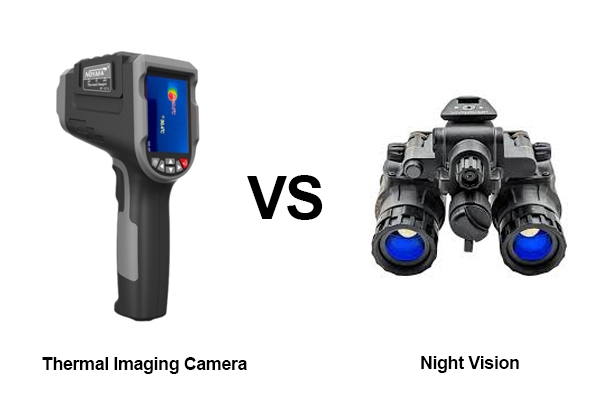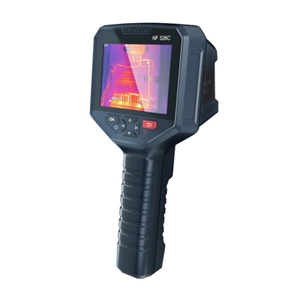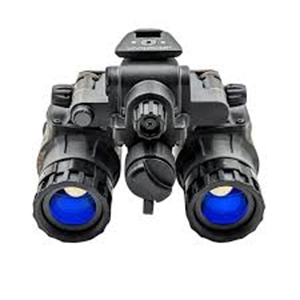In the realm of night-time visibility, two technologies stand out prominently: Thermal imaging cameras and night vision devices. While both are designed to enhance visibility in low-light or no-light conditions, they operate on fundamentally different principles and have distinct applications. Here SISCO will delve into the differences between thermal imaging cameras and night vision, exploring their technologies, applications, advantages, and limitations.
Understanding Thermal Imaging Cameras
Definition and Working Principle
Thermal imaging cameras detect and visualize the heat emitted by objects, translating infrared radiation into visible images. Unlike conventional cameras that rely on visible light, thermal imaging cameras can function in complete darkness, making them invaluable for a variety of applications.
The technology of thermal imaging cameras operates on the principle that all objects with a temperature above absolute zero emit infrared radiation. The intensity of this radiation increases with temperature. A thermal imaging camera captures this radiation through a lens, which is then focused onto an infrared sensor array. The sensor converts the infrared radiation into electrical signals, which are processed to create a visual image displaying different temperatures in varying colors or shades.
Applications of Thermal Imaging Cameras
Thermal imaging cameras have a wide range of applications across various fields, including:
- Surveillance and Security: Used for perimeter surveillance, search and rescue operations, and intrusion detection.
- Medical Field: Detecting fever, inflammation, and blood flow issues.
- Industrial Inspections: Identifying heat leaks, electrical faults, and mechanical failures.
- Environmental Monitoring: Tracking wildlife, monitoring vegetation health, and detecting forest fires.
- Automotive Industry: Enhancing driver vision in low visibility conditions and for advanced driver-assistance systems (ADAS).
Advantages of Thermal Imaging Cameras
- Complete Darkness Operation: They do not require any light source to function.

- Long Range Detection: Capable of detecting heat sources from a considerable distance.
- Unobstructed Vision: Can see through smoke, fog, and certain obstructions.
- Temperature Measurement: Provides precise temperature readings of objects.
Limitations of Thermal Imaging Cameras
- Cost: Typically more expensive than night vision devices.
- Resolution: Lower image resolution compared to visible light cameras.
- Glass Interference: Unable to see through glass as it reflects infrared radiation.
Understanding Night Vision
Definition and Working Principle
Night vision technology amplifies available light, including visible and near-infrared light, to create a visible image in low-light conditions. Night vision devices(NVDs) are commonly used in military, law enforcement, and wildlife observation.
Night vision devices work by capturing ambient light through a lens, which then enters an image intensifier tube. The tube converts photons (light particles) into electrons, which are then amplified and reconverted into visible light, displayed on a screen. This process significantly enhances the available light, allowing for clear visibility in dark environments.
Types of Night Vision Devices
- Image Intensifier Tubes (IIT): Commonly used in military applications, these devices amplify low light to produce a brighter image.
- Digital Night Vision: Uses a digital image sensor to capture and amplify light, allowing for image recording and playback.
- Thermal Night Vision: Combines thermal imaging camera with night vision to provide enhanced detection capabilities.
Applications of Night Vision
- Military and Law Enforcement: Surveillance, navigation, and target identification in low-light conditions.

- Wildlife Observation: Studying nocturnal animals without disturbing them.
- Search and Rescue: Locating missing persons in low-light conditions.
- Aviation and Maritime: Enhancing pilot and navigator vision during night operations.
Advantages of Night Vision
- High Resolution: Provides clearer images with more detail.
- Lower Cost: Generally less expensive than thermal imaging cameras.
- Versatility: Suitable for a wide range of applications.
Limitations of Night Vision
- Light Dependency: Requires some level of ambient light to function effectively.
- Glare Sensitivity: Can be overwhelmed by bright lights, causing temporary blindness.
- Limited Range: Shorter effective range compared to thermal imaging camera.
Thermal Imaging Cameras vs Night Vision
Technological Differences
- Thermal Imaging Cameras: Detects infrared radiation, does not require light, and provides temperature data.
- Night Vision: Amplifies available light, requires some light source, and offers higher image resolution.
Performance in Various Conditions
- Complete Darkness: Thermal imaging camera outperforms night vision as it doesn't rely on ambient light.
- Smoke and Fog: Thermal imaging camera can see through obstructions better than night vision.
- Detail and Clarity: Night vision provides better image detail and clarity.
Cost Considerations
- Thermal Imaging Cameras: Generally more expensive due to advanced technology and sensor components.
- Night Vision : More affordable, especially for consumer-grade models.
Maintenance and Durability Differences
- Thermal Imaging Cameras: Require careful handling due to sensitive sensors; higher maintenance cost.
- Night Vision: Generally more rugged and require less maintenance.
Choosing the Right Technology
Application-Based Recommendations
- Surveillance and Security: Thermal imaging camera for detecting intruders in complete darkness and through obstructions.
- Wildlife Observation: Night vision for detailed observation of animals without disturbing their environment.
- Search and Rescue: A combination of both technologies for optimal performance in various conditions.
- Industrial Inspections: Thermal imaging camera for identifying heat-related issues and preventing equipment failures.
Industry-Specific Use Cases
- Military: Night vision for detailed target identification; thermal imaging camera for detecting heat signatures in complex environments.
- Medical: Thermal imaging camera for non-invasive diagnostic purposes.
- Automotive: Thermal imaging camera for enhanced driver assistance in low-visibility conditions.
Future Trends in Night-Time Visibility Technologies
The future of night-time visibility technologies is promising, with advancements focused on enhancing performance, reducing costs, and expanding applications. Some trends to watch include:
- Integration with AI: Combining thermal imaging camera and night vision with artificial intelligence for automated detection and analysis.
- Miniaturization: Developing smaller, more portable devices without compromising performance.
- Enhanced Image Processing: Improving image clarity and resolution through advanced algorithms.
- Cost Reduction: Making these technologies more accessible to a broader range of users.
Thermal imaging cameras and night vision devices serve crucial roles in enhancing visibility in low-light and no-light conditions. While they share the common goal of improving vision, their underlying technologies and applications differ significantly. Thermal imaging camera excels in complete darkness and through obstructions, providing critical temperature data, while night vision offers high-resolution images in low-light environments. Understanding the differences and selecting the appropriate technology based on specific needs and conditions is essential for maximizing effectiveness and efficiency.
As technology continues to evolve, both thermal imaging camera and night vision will likely see further improvements, making them even more valuable in a wide range of applications. Whether for security, medical, industrial, or recreational purposes, these technologies will continue to enhance our ability to see and interpret the world around us, even when the lights go out.

